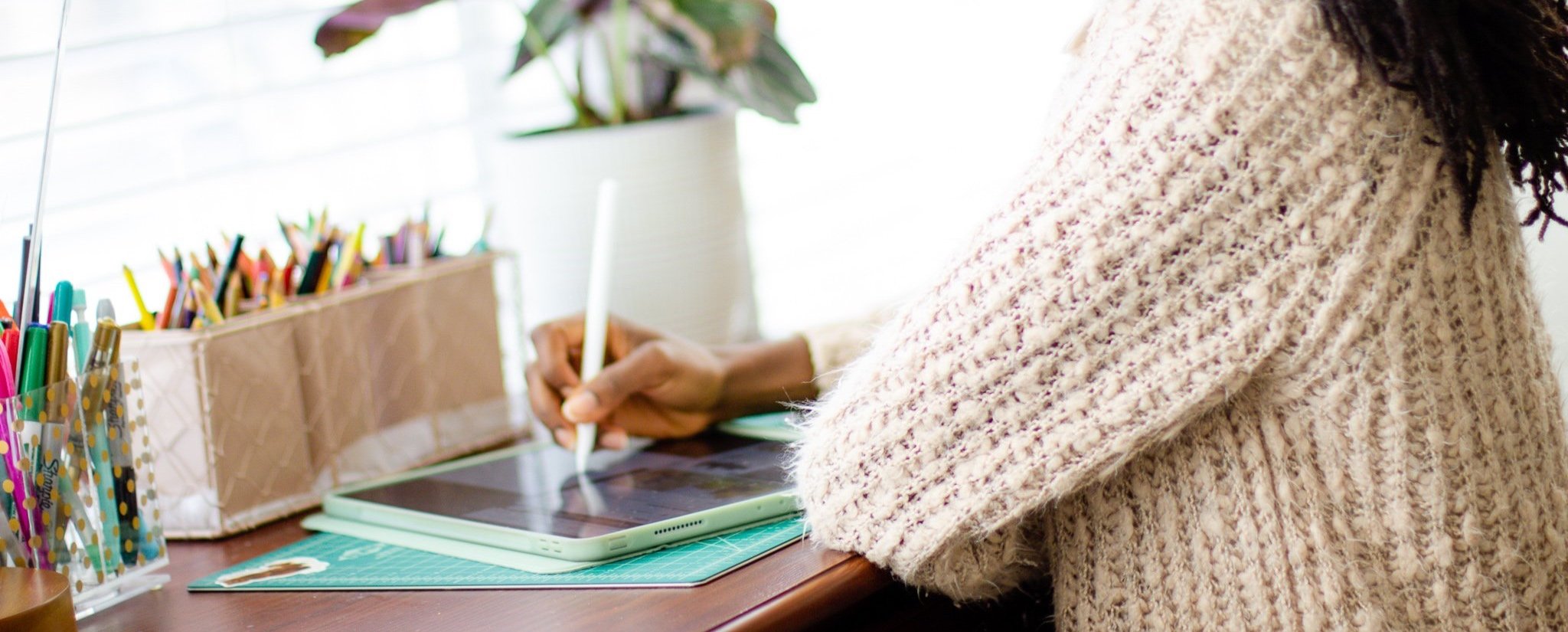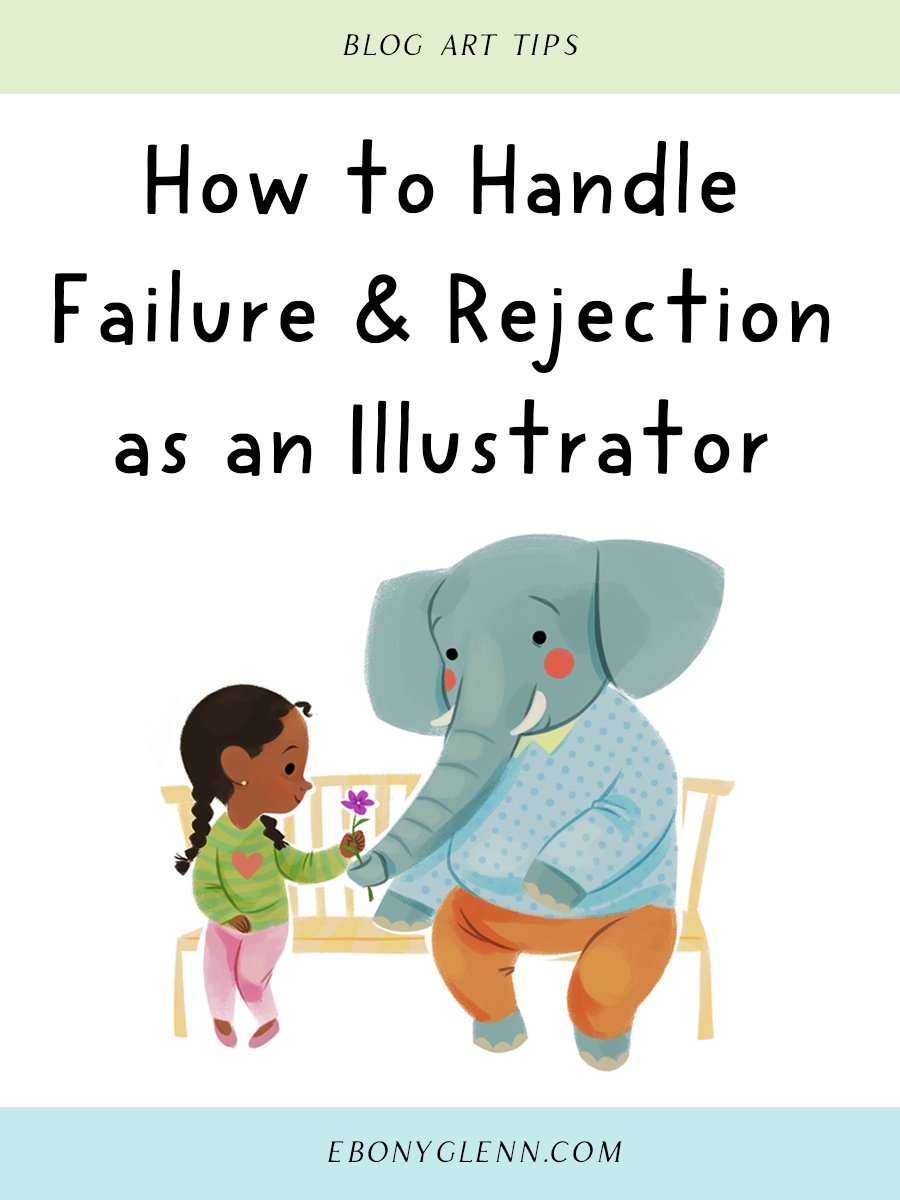
Art & Story
Sharing tips, inspiration, and lessons from an artists’ journey.
Juggling Work and Motherhood
“Balancing work, motherhood, and personal aspirations can be challenging, but it’s essential to be compassionate and flexible with oneself during this period.”
Not too long ago I received an email with the request to write a blog post on how to ‘juggle home, work, and motherhood while still making time to be the best illustrator you can be.’
I wish I had a simple answer to give on how to manage it all with ease, but the truth is I don’t have one. I, too, still have days that are harder than others.
You see, since my daughter was born I struggled for a long time to juggle these demands (especially as a single parent.) Not only was I ashamed for not working as consistently as before, but also for not being able to care for my daughter the way I had always imagined. And everyday I felt guilt and shame for not knowing how to handle it all.
What I has helped me, though, is accepting my new reality with as much compassion, empathy, and grace as possible.
Now there’s no getting around that becoming a parent changes our lives and work practices. The new responsibilities that motherhood brings has changed the way I show up in the world—not only for my work and artistry but for myself and others, too. And over time, I understood how unfair and unkind I was being by judging and berating myself as a new mom.
Instead, I’ve learned that it’s okay to accept my limitations and be more flexible and informal with my work practice. And if there are resources I can use that will make my new reality easier, I accept them with open arms.
“Allow your art and work practices to be very flexible and informal as you weather this season of your life.” - Lindsay Mack
To juggle the responsibilities of both work and motherhood, we need to give ourselves grace for learning how to tend to both. We need to understand that our limited time and energy now is more precious than ever before. And we need to let go of the unfair expectations that we place upon ourselves (and that society places on women as well.)
Remember, this season is temporary. There are so many new parents like you and me who are finding ways to juggle the new responsibilities that parenthood brings. And as we grow and adapt as parents, so will our lives and our art practices. So go easy on yourself. This season will eventually pass and a new one with different challenges and surprises and blessings will take its place.
If you’re a mom who’s juggling work as an illustrator and caretaking your little ones, please share what has helped you in the comments below. I’m sure we could all find solidarity with one another’s journey into motherhood.
With love and care,
Ebony
How to Handle Failure and Rejection as an Illustrator (or Artist)
As artists, we are bound to experience failure and rejection on our artist journey from time to time. It’s inevitable. No matter how much we try, we all will eventually encounter those roadblocks that set us back and make us doubt ourselves.
But despite this, our failures and rejections do not have to be hindrances. Nor do they have to define us. In fact, I believe that they can be aides on our journey.
Failure and rejection can help us reach our full potential should we choose to think differently about them.
While I do not have a magic formula for avoiding failure altogether, I have found some ways to overcome those feelings of defeat and despair that accompanies it. Experiencing failure and rejection can be discouraging, but we do have the power to transmute our losses into future wins.
In this post I will give you some advice for dealing with failure and rejection as artists and illustrators. I hope you find the strength within yourself to overcome your challenges and continue on your journey so you can share your talents with the world.
Acknowledge How You Feel
To deal with the discomfort that comes with failure and rejection, we need to acknowledge, process, and release the uncomfortable feelings that arise within us first.
Let’s face it: There’s no getting around how unpleasant failure and rejection feel. In some ways, they can even traumatize us. Yet, to move forward from failure and rejection in a healthy way, we need to deal with these difficult emotions so they won’t hinder our progress and steal our motivation.
It’s normal to feel a range of emotions such as disappointment, frustration, disbelief, grief, or even relief in the face of failure and rejection. All your feelings are valid, and it’s okay to feel the way you do. The harm is when we chose to repress these emotions or avoid them altogether instead of allowing them to exist and be felt.
The only way out is through. – Robert Frost
The only way to overcome these feelings that accompany rejection and failure is to feel into them. We need to sit with and then eventually release them.
So, take as much time as you are able to process the pain, loss, or grief. And if you can, I recommend that you talk to someone you trust about your experience. You can also use your art as a therapeutic way to express yourself and release your emotions. Whatever you choose, just make sure to acknowledge your emotions so you can continue on your journey without them weighing you down.
Understand that Failure is Part of the Artist Journey
Our failures can provide us with powerful lessons to help us learn and grow. They can be guides on our journey into becoming better artists. And if you’re able to see the lessons they give as opportunities for growth and not personal attacks to your worth and capabilities, you’ll be more resilient in the face of them.
It’s okay to fail, it happens to us all amateurs and pros alike.
Easier said then done, I know. Personally, I’ve had my fair share of failures and rejections doing this work, and each time feels like a blow to the stomach. But only when I am willing to sit with my emotions and see pass my disappointment do I find something worthwhile to be gained from these difficult experiences.
You see, failure and rejection can be our teachers. By forcing us to change course, try out new paths, or even start over again, they can teach us resilience, faith, and perseverance. They can also be signals to be gentle with ourselves and honor our progress.
Know that failure and rejection are supposed to happen on your journey. They are the bitter medicine that can help us know where we can improve, change direction, rest, build our confidence, and see from new perspectives.
Learn and Grow from the Experience
Sometimes, failure is redirection.
Once you’re able to acknowledge your emotions and accept failure and rejection as part of your artist journey, choose for yourself to learn from the experience and grow into becoming a better artist.
The lessons failure can provide you with may be simple and straightforward or layered and complex. Some may ask you to dig deeply within your psyche to unearth its message. And some lessons may even take years for you to understand. But remember this; there’s always something you can gain from the experience that will help you on your journey.
The key is to take your painful experience and extract the wisdom from it to make something beautiful.
Remember Your Strengths
It’s not the most talented who succeed. It is those who refuse to give up. – Kute Blackson
Failure can derail you by making you doubt yourself and your abilities. It can even make you question your path and consider giving up. But remember this, life is a marathon, not a sprint, and the artist journey is no different.
You have talent. You have something wonderful to contribute to the world, and your work has value. There will be times when you fail but remember that there will also be times when you succeed.
So, dust yourself off and keep going. Celebrate the progress you made and the dedication you’ve kept. And don’t fixate on your perceived weaknesses or what someone else perceives of your artwork.
The key takeaway I want you to know is to never let anyone or allow any negative experience to dictate your worth as an artist. Failure is a teacher that gives you lessons on how to become better equipped when traveling on your artist journey. So, choose to think differently about it and extract the lesson it’s wants to impart to help you grow.
Thanks for taking the time to read this post. If you’re interested in reading more posts like this, then please click the like button below and/or leave me a comment. You can also share this post with a friend and sign up for my newsletter to receive more insights and musings from me. Until next time, I wish you the best on your artistic journey.




